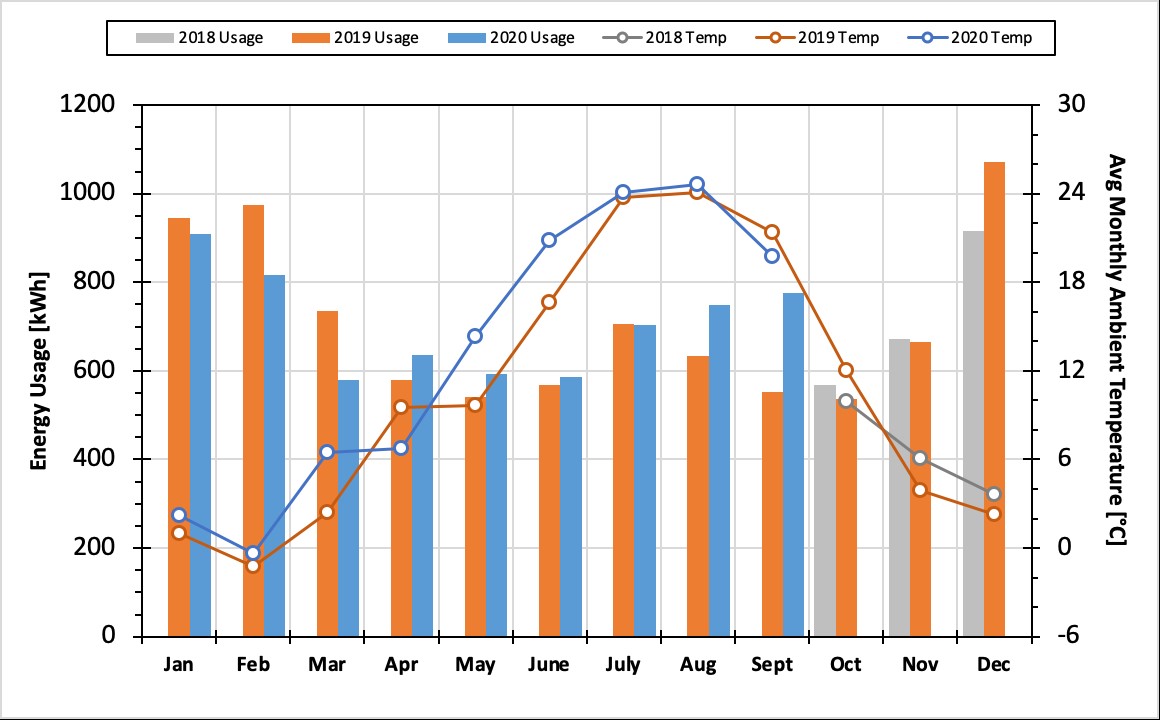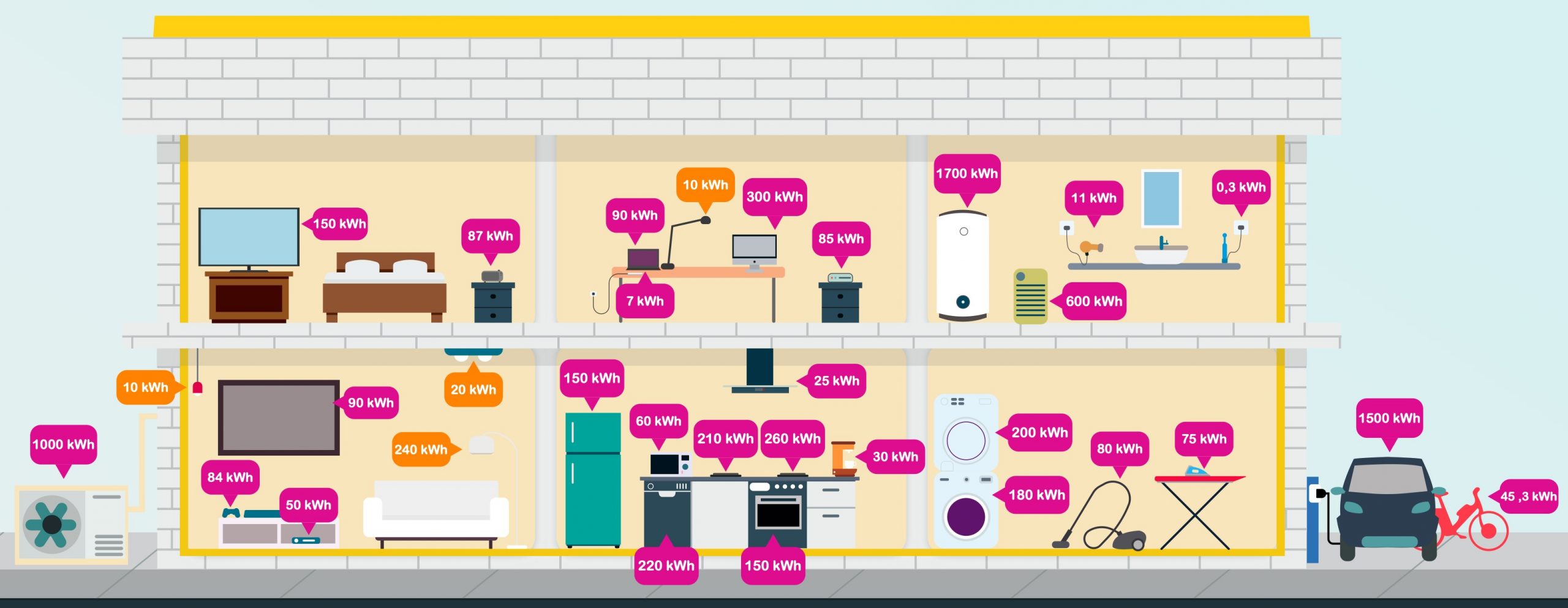What to know about residential energy storage?
What to know about residential energy storage?
When making the choice to commit to an energy storage system for your home, there is a lot of information presented to you. Every company has a “great” product that can “revolutionize” your energy usage profile. The best approach is to start by setting the appropriate expectations. There is a basic misconception that any energy storage system can be dropped into your house and then amazingly the whole house stays powered during a power outage for multiple hours. It is true that there are systems that can support an island-mode/off-grid setup, which is consistent with this assumption. However, most residential storage systems on the market are not designed and sized with this in mind. Also, that kind of functionality may not be what is appropriate or cost-effective for the homeowner’s needs. Therefore, it is beneficial to have a foundation of understanding for what a system can do.
With many companies offering a home storage solution, there are specific terms that indicate what the system can do. To start, there are terms associated with where the system is located relative to the electricity meter provided by the utility company. A behind-the-meter (BTM) storage system is able to provide energy directly to the house or building where it is installed without having to interact with the electricity meter. A front-of-the-meter (FTM) system means it provides energy to off-site locations, with the energy passing through the electricity meter. For instance, the power provided by the utility is considered FTM. When thinking of a residential storage system, it is a typically BTM. There can be exceptions, such as a community storage system that serves a collection of houses where the energy distribution is monitored and regulated in conjunction with the utility, passing through the meter.
An energy storage system is typically specified with an energy value and a power value. The energy value, in kilowatt-hours (kWh), refers to the capacity of the battery. The power value, in kilowatts (kW), is mainly associated with the power conversion capability of the inverter, which is a component that interfaces the battery with the electrical box. The power from the battery is called direct current (DC) power. An inverter is sized to interface with a set voltage range of DC power. It is able to accept the DC power and convert it to the appropriate alternating current (AC) output voltage and frequency needed. The national grid codes for the installation location need to be considered since they, amongst other things, define what the output AC voltage and frequency need to be.
When you are looking into an energy storage system, the company you speak to is going to ask multiple questions to understand what you hope to accomplish. This conversation can address a number of topics. Do you already own another system, like solar panels? Are you worried about power outages and want to back up critical circuits in your home? What do you consider a critical circuit? How big of a system can you afford, or have you considered a prospective budget? Have you looked into any local subsidies available? This is just a sampling of aspects to consider.
You may be wondering: How is all of this information interpreted? To start, it is good to have a general understanding of power consumption around your home. On a macro scale, many utility companies offer their consumers the ability to obtain electricity usage data associated with their meter. This information is compiled for billing but there is also a movement to have it available in time intervals that would be useful for a homeowner to utilize when considering additions to the home. As an example, below is a collection of utility information of the monthly energy usage for a single-family residence with four bedrooms, three bathrooms and three occupants. For this particular household, the maximum usage for any month since October 2018 is approximately 1100 kWh. This maximum could be exploited to represent a daily usage value to help size an appropriate system.

On a smaller scale, there are specifications for each appliance that can be used to estimate their power usage. There can be variations depending on specific features, but there are some general average values that can be used to get a base idea of your power consumption. When it is needed, a full plug load analysis could be performed by e.g. the company providing the energy storage system, but this kind of specificity may not be necessary or cost effective to help you. A quick infographic created by Qlabe, an information site that compiles appliance statistics, is displayed below, showing the estimated annual consumption of various items in a house. Reference the Qlabe website to find a larger list of appliances and their average annual energy usage. From the infographic, you can see that the water heater, air conditioner and electric vehicle represent the largest loads annually. There is still relatively significant usage from conventional appliances like the refrigerator, dishwasher, stove, and washing machine. Another factor that will need to be taken into account for an island-mode energy storage system is the inrush current. When you turn on some types of devices, e.g. transformers and electrical motors, there is an instantaneous peak in current draw, and it is typically much higher than the steady state current that device utilizes in operation. There can be a scenario where the appliances are turned on somewhat simultaneously so an energy storage system may see a large momentary spike in current. This potential value needs to also be considered in the sizing of an island-mode inverter and energy storage system.

In any case, after this discussion with your intended supplier, there should now be a clearer understanding of how you plan to use a storage system. Maybe you need to backup essentials in case of a power outage. You may consider your electricity bill to be too expensive and you want to use a storage system overall to lower the energy used during peak periods of the day. Perhaps you have considered adding PV panels to your home, or you already have them, and want to optimize their use. It may be that you have made the investment in an electric vehicle and want to make sure the addition of the car charger has little to no impact on your electricity bill. Or it could be any combination of these needs. From here, the decision can be made as to what is most important. There is no one-size-fits-all analysis that can be done since the needs of the household varies for a number of factors, including but not limited to location, house size, type of heating, number of inhabitants, and date of house construction.
Depending on the energy and power size of the system purchased, now you can understand what can be backed up with a single system. There is a quick calculation that can be done to get a general idea. According to information from the Swedish Energy Agency and Statistics Sweden, the average daily usage of a Swedish residential customer is approximately 29 kWh. There are many variations in size, battery type and power output within the market-ready energy storage solutions. One of the smaller sizes on the residential market is a 4-kWh option. Using an oversimplification, this example system is capable of approximately 2.6 hours of storage for the average residential customer per the following calculation and an experience factor of 80% (based on the ideal state-of-charge window):
EQUATION
Granted, this is an oversimplification since an average is just that and does not represent the high and low points in usage for that household. There are also other factors to take into account such as time of day and time of year for energy consumption and other installed renewable energy sources.
This type of simplified calculations can also give you an idea of how many hours of storage you achieve with a smaller set of loads instead of an attempt at the full house. For instance, the basic loads you may want to back up are what you consider critical to maintain your comfort. This may include the refrigerator, freezer, certain lighting and outlet circuits, the internet, the computer and the coffee maker. The example 4-kWh system could support a set of devices like this for nearly 24 hours. In addition, this energy storage system could be coupled easily with additional systems to expand the coverage for a longer period or to support other necessities like small air conditioning units and electric vehicle chargers set to a low rate.
If backup is not the primary goal, the example 4-kWh system could be used multiple times in a day for peak reduction. The system could provide e.g. 4 kW continuously for a quarter-hour during three different intervals before the energy storage needs to be re-charged again. As the consumer, understanding the various idiosyncrasies associated with these decisions will ultimately lead you to a storage system you want and need.